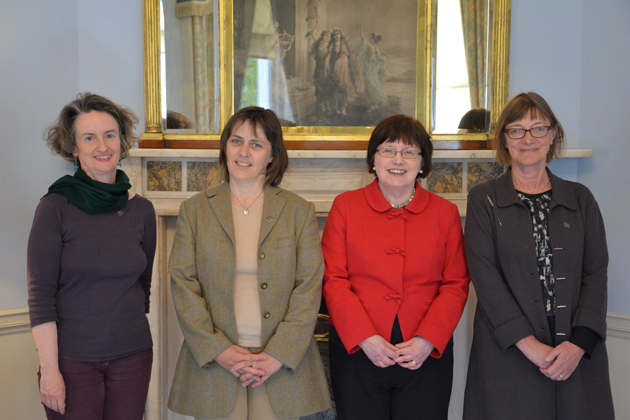The Mansion House was host to last week’s seminar on to mark the buildings tercentenary.
The Mansion House is a building of distinction. It is the oldest free-standing house in Dublin, it is a rare example of Queen Anne style architecture in Dublin, it is the only remaining mayoral residence in Ireland and it is older than any surviving mayoral residence in Britain.
Constructed in 1710 by property developer Joshua Dawson to be his town house, it was obtained by the then Dublin Corporation for use as the official residence of the Lord Mayor. On 18 May 1715, the Corporation purchased the house at a cost of £3,500 sterling and also agreed to pay a yearly rent to Dawson of forty shillings (later waived) and a loaf of double-refined sugar weighing six pounds each Christmas. In return, Joshua Dawson agreed to build on an extra room to the house which could be used for civic receptions – the famous Oak Room. The Oak Room continues to fulfill this function to this day and welcomes thousands of Dubliners, Irish and international visitors yearly.
The Mansion House has been the centre of Dublin¹s civic life for nearly three hundred years. During the 18th century, the annual City Ball was held in the Oak Room and the Lord Mayor dispensed generous hospitality, aided by a yearly grant of twenty thousand oysters from the civic oyster beds. In 1821, the Round Room was built beside the Mansion House for the visit of King George IV to Dublin and it was constructed in just six weeks. It has since seen many historic events, such as the first meeting of the First Dáil, held in the Round Room on 21 January 1919. In 1864, the original Supper Room was built to afford additional space for civic events; the current building, dating from the 1890s, is the third on this site. In recent years, the Round Room and Supper Room have hosted a range of public activities and cultural events. The Round Room and Supper Room today have a new incarnation as a restaurant and banqueting hall but remain when necessary for special events interconnected to the core and principle structure on the site.
The seminar was convened by the City Archivist as one of several events to celebrate the Mansion House in its 300 years as the residence of the first citizen. Several papers were provided exploring different themes – the historical and architectural context of the Mansion House, its artifacts and collections, and the on-going care and management of the property. The seminar also looked at the contribution of Lord Mayors as custodians of this pivotal site down through the centuries and their role in shaping the character of the Mansion House. The on-going role of the City Architect from the out-set of its development – guiding and enhancing the property to the present day where recent alterations were undertaken in the context of a Conservation Plan for the Mansion House – the internationally recognised planning tool/ best conservation practice for ensuring the long term management of this architecturally significant sites.
Photo: City Architects Grade 1 Conservation team Patricia Wrafter, Nicki Matthews and Susan Roundtree with Dr. Mary Clarke, City Archivist in the Lady Mayoress’s Parlour.

